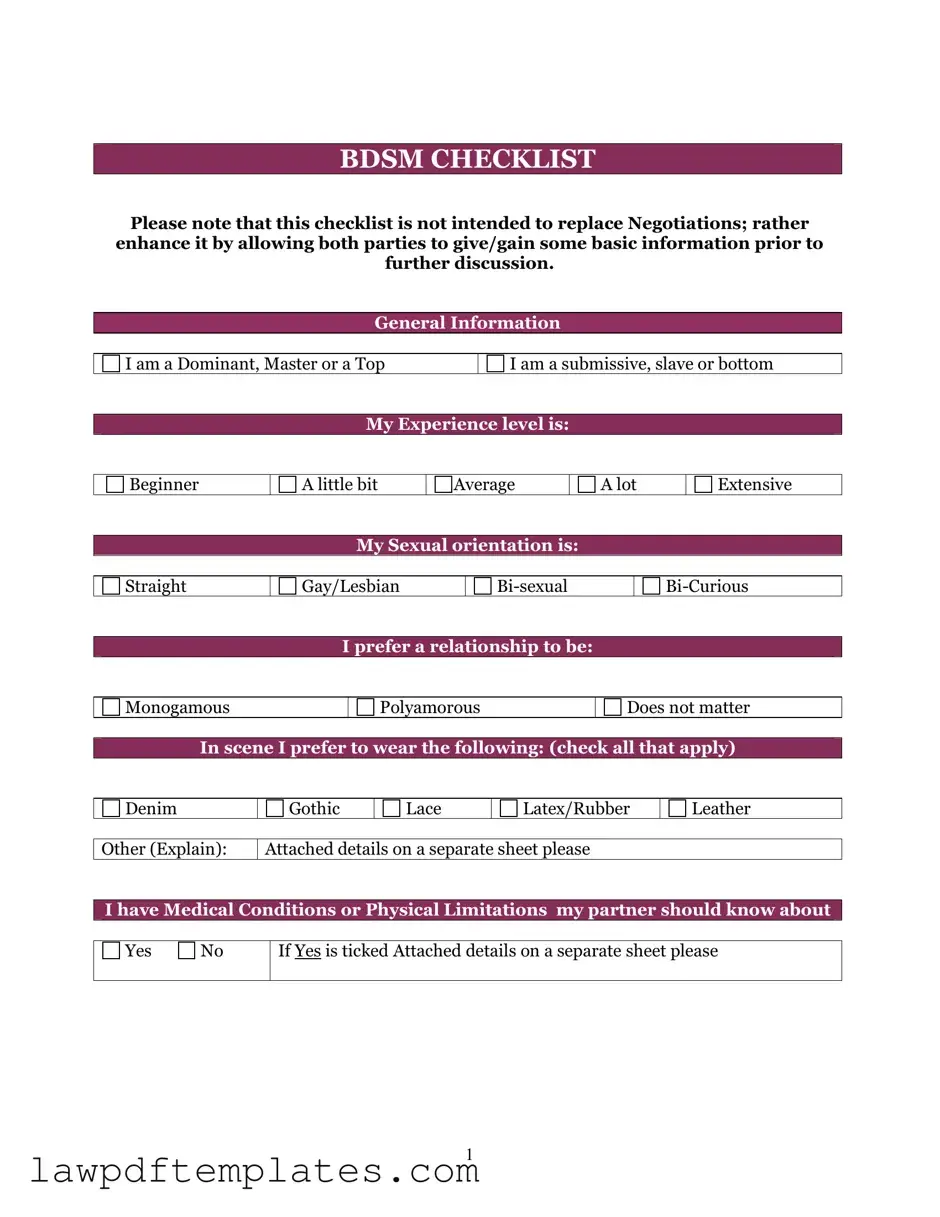Filling out the BDSM Checklist form can be a straightforward process, but many people make common mistakes that can lead to misunderstandings or incomplete information. One frequent error is failing to read the instructions carefully. Skimming the guidelines can result in missing essential details, which may affect the clarity of the responses.
Another mistake is not being honest about preferences and limits. Some individuals may feel pressured to conform to what they think is expected. This can lead to misrepresentation of one's true desires or boundaries, which is crucial for safety and consent.
Inadequate communication with partners is also a common pitfall. Before completing the checklist, discussing preferences and limits with partners ensures that everyone is on the same page. This step can prevent confusion and foster a better understanding of each other's needs.
Omitting important details is another error that can have significant consequences. Individuals often forget to include specific interests or limits, which can lead to misunderstandings later. Providing thorough and complete information is vital for effective communication.
Some people rush through the form, which can result in mistakes. Taking the time to reflect on each item is essential. A rushed approach can lead to overlooked preferences or misinterpretations of what certain terms mean.
Another mistake is failing to update the checklist regularly. Preferences can change over time, and not revisiting the checklist can lead to outdated information being used in current scenarios. Regular updates help maintain open communication and ensure that everyone's needs are met.
Additionally, misunderstanding the terminology can cause confusion. The BDSM community uses specific language that may not be familiar to everyone. Taking the time to research and understand these terms is important for accurately completing the checklist.
Finally, neglecting to discuss the completed checklist with partners can lead to issues down the line. Open dialogue about what was marked can help clarify intentions and ensure that all parties are comfortable and aware of each other's boundaries.






